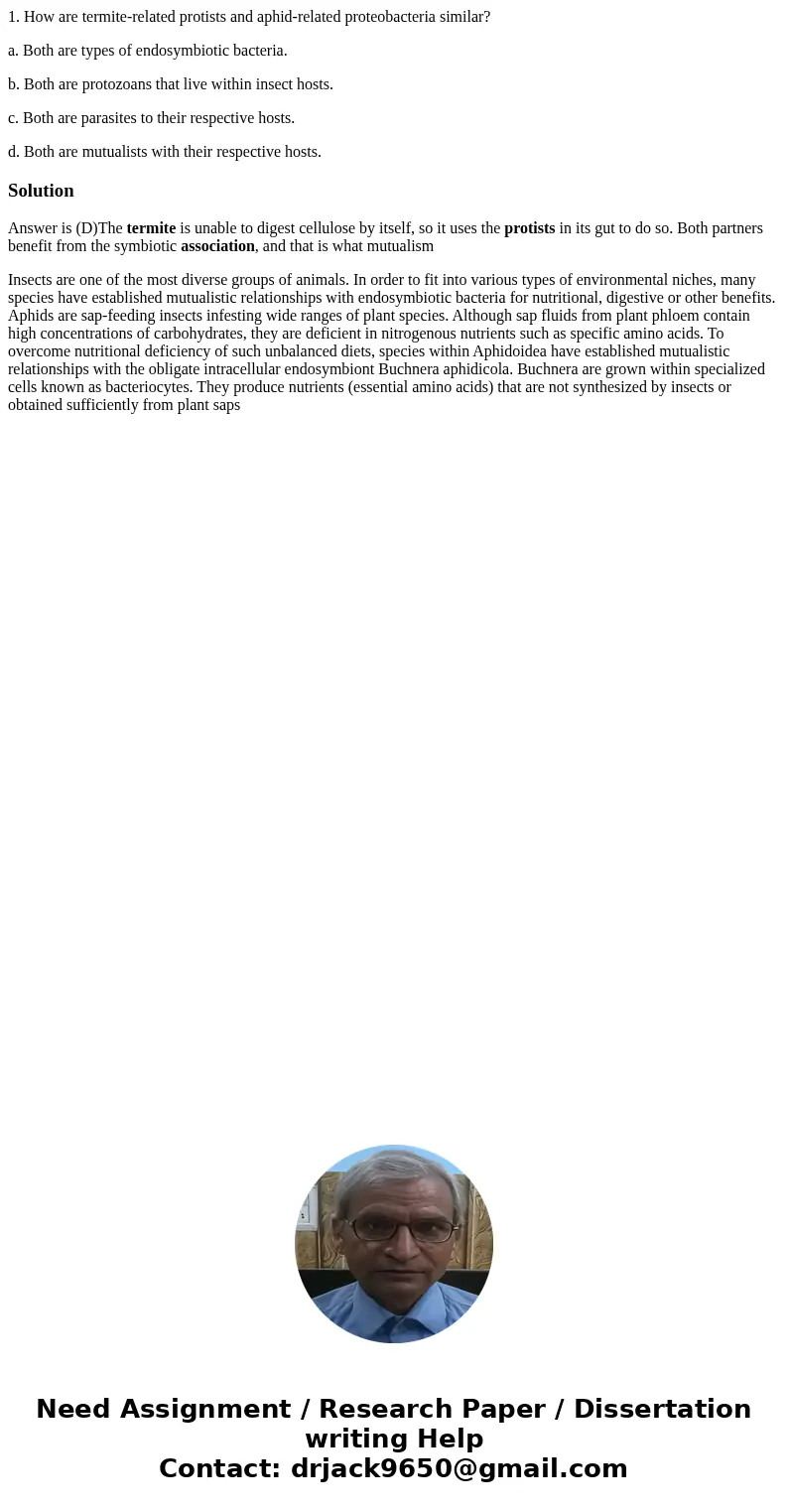1 How are termiterelated protists and aphidrelated proteobac
1. How are termite-related protists and aphid-related proteobacteria similar?
a. Both are types of endosymbiotic bacteria.
b. Both are protozoans that live within insect hosts.
c. Both are parasites to their respective hosts.
d. Both are mutualists with their respective hosts.
Solution
Answer is (D)The termite is unable to digest cellulose by itself, so it uses the protists in its gut to do so. Both partners benefit from the symbiotic association, and that is what mutualism
Insects are one of the most diverse groups of animals. In order to fit into various types of environmental niches, many species have established mutualistic relationships with endosymbiotic bacteria for nutritional, digestive or other benefits. Aphids are sap-feeding insects infesting wide ranges of plant species. Although sap fluids from plant phloem contain high concentrations of carbohydrates, they are deficient in nitrogenous nutrients such as specific amino acids. To overcome nutritional deficiency of such unbalanced diets, species within Aphidoidea have established mutualistic relationships with the obligate intracellular endosymbiont Buchnera aphidicola. Buchnera are grown within specialized cells known as bacteriocytes. They produce nutrients (essential amino acids) that are not synthesized by insects or obtained sufficiently from plant saps

 Homework Sourse
Homework Sourse